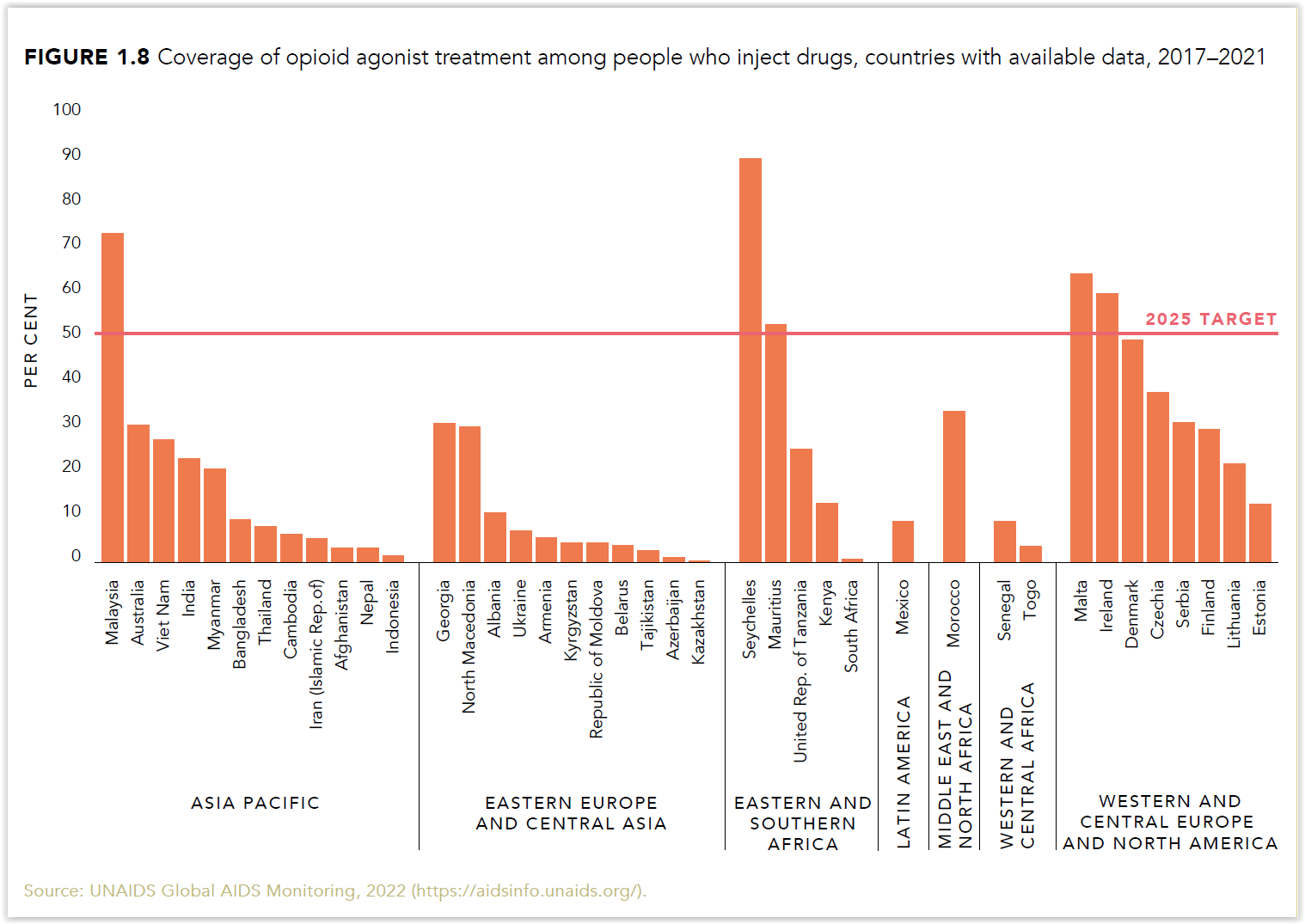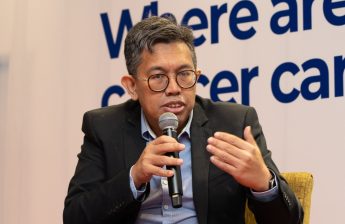MONTREAL, July 28 – Malaysia was one of only six countries around the world that provided opioid agonist therapy (OAT) to at least half of people who are addicted to opioid drugs, a United Nations agency reported.
According to the UNAIDS Global AIDS Update 2022 report titled “In Danger”, released Wednesday in Montreal, Canada, only Malaysia, Denmark, Ireland, Malta, Mauritius, and Seychelles reached the global 2025 target of 50 per cent OAT coverage among opioid-dependent people.
OAT involves taking opioid agonists – methadone or buprenorphine – to treat opioid addiction. Methadone and buprenorphine are long-acting opioid drugs that act more slowly in the body for a longer period of time, preventing withdrawal symptoms without causing a person to get high.
UNAIDS data showed that from 2017 to 2021, Malaysia reported the second-highest OAT coverage among people who inject drugs at 70 per cent, out of the half a dozen countries that reached the 50 per cent target.
Seychelles had the highest OAT coverage at 90 per cent.
UNAIDS reported that OAT coverage did not reach the 50 per cent target in any region. Median coverage among reporting countries was far below the target: Asia and the Pacific (9 per cent), western and central Africa (7 per cent), and eastern Europe and central Asia (4 per cent).
Since 2017, among 54 countries that reported the number of needles and syringes distributed per person who injects drugs per year by needle–syringe programmes, only six reported achieving the recommended 200 needles and syringes distributed per person who injects drugs.
According to UNAIDS, in the same period, only 18 of the 40 reporting countries achieved the global 90 per cent target on coverage of safe injecting practices, or sterile injecting equipment use during last injection among people who inject drugs, prisoners, and others in closed settings.
“Stronger political will and addressing funding gaps for the introduction and scale-up of opioid agonist therapy and needle–syringe programmes are needed to reach the 2025 targets, particularly in regions where epidemics are predominantly among people who inject drugs and their sexual partners,” said the UNAIDS report.
International AIDS Society (IAS) president and Universiti Malaya infectious disease physician Prof Dr Adeeba Kamarulzaman previously told a webinar last November that harm reduction programmes prevented up to 39 per cent or 13,317 new HIV infections in Malaysia from 2006 to 2013.
Malaysia’s harm reduction programme primarily consists of the Needle and Syringe Exchange Programme (NSEP) and Opioid Substitution Therapy (OST).
The NSEP is a programme where used needles and syringes are exchanged with sterile ones among intravenous drug users, while the OST or the Methadone Replacement Therapy (MRT) is when methadone — a drug that is similar to morphine in its effects but less sedative — is given to patients to reduce opioid dependence.
Health Minister Khairy Jamaluddin told Parliament last November that the National Pharmaceutical Regulatory Agency (NPRA) has so far approved six methadone products to treat chronic opioid abuse as part of the Health Ministry’s harm reduction programme.
However, the HIV epidemiology landscape has changed in Malaysia over the past decade from people who inject drugs, with the majority of new infections now linked to sexual transmission, primarily among sexual minorities.
Alarmingly, the UNAIDS 2022 report highlighted that Malaysia is one of 38 countries that has seen increasing HIV infections since 2015.
The report cited Malaysia as being among the countries with rising HIV epidemics among “key populations”, defined by UNAIDS as gay men and other men who have sex with men, sex workers, transgender people, people who inject drugs, and prisoners and other incarcerated people as the five main key population groups that are particularly vulnerable to HIV and frequently lack adequate access to services.
From 2017 to 2021, Malaysia recorded the second highest proportion of new HIV infections among key populations in a sample of 11 countries at 78 per cent, behind the Philippines’ 93 per cent.








